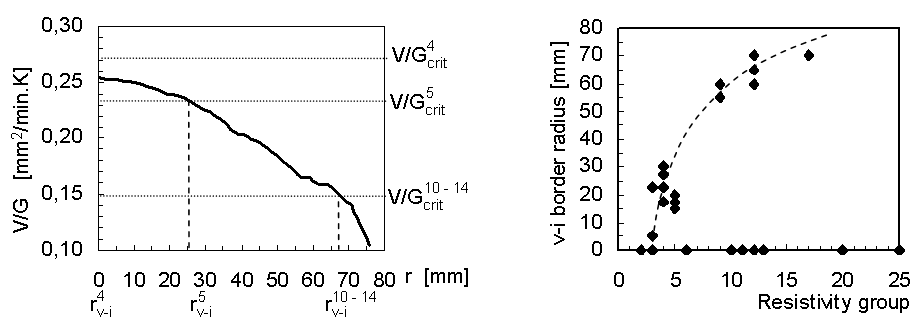NAME DATE PERIOD ASSESSMENT IS ON
COVERAGE PERIOD [SEE INSTRUCTIONS] S UMMARY OF0 21415 PERIODO OCHENTA Y SEIS DE
0 32737 PERIODO CIENTO CATORCE DE SESIONES
0 43752 PERIODO OCHENTA Y CINCO DE
0 43752 PERIODO OCHENTA Y CINCO DE
19 PERIODO CIENTO TRES DE SESIONES ORDINARIAS
John Brown’s Raid
Name ________________________________________ Date _______________ Period ______
Assessment
is on ____________________.
Terms
You need to be familiar with the following terms. It is often helpful to use index cards for this – OR, you can draw a picture to help you remember the term in the column on the right.
|
Middle Ages |
time period in Europe between the fall of the Roman empire and the beginning of the Renaissance; sometimes called the “Dark Ages” |
|
|
Crusades |
Holy wars between Muslims and Christians over the holy land of Jerusalem |
|
|
Renaissance |
“rebirth” of learning that took place in Europe between the 1300s and 1600s |
|
|
printing press |
machine that increased the speed at which books and other printed materials could be produced. |
|
|
magnetic compass |
device that indicates the direction of north |
|
|
astrolabe |
device that helped people use objects in the sky to determine latitude. |
|
|
caravel |
fast-sailing ship with rudder and triangular sails that could sail against the wind |
|
|
Columbian Exchange |
trading of goods, ideas, and diseases between the Old World and the New World |
|
|
conquistador |
Spanish conqueror |
|
|
Laws of the Indies |
system of laws set up by the Spanish government to control the Spanish colonies in the Americas; divided people into social classes based on race |
|
|
peninsulares |
people living in the Spanish colonies that were born in Spain; highest social class set up by Laws of the Indies and usually the ruling class |
|
|
creoles |
people living in the Spanish colonies that were born in America but had Spanish parents; second-highest social class set up by Laws of the Indies |
|
|
mestizos |
people living in the Spanish colonies that were part Spanish and part Native American; second-lowest social class set up by Laws of the Indies |
|
|
Indian class |
people living in the Spanish colonies that were full-blooded Native Americans; lowest social class set up by Laws of the Indies and usually enslaved |
|
People
|
Christopher Columbus |
Italian-born explorer who sailed for Spain in 1492 looking for a faster route to Asia |
|
Tainos |
Native American group living on the Caribbean island of San Salvador when Columbus arrived there in 1492 |
|
Vasco Nunez de Balboa |
Spanish explorer who explored Panama and claimed the Pacific Ocean for Spain |
|
Ferdinand Magellan |
Explorer for Spain who led an expedition that circumnavigated (sailed around) the world |
|
Hernando Cortez |
Spanish Conquistador who conquered the Aztec empire and claimed Mexico for Spain |
|
Francisco Pizarro |
Spanish Conquistador who conquered the Inca empire and claimed much of South America for Spain |
|
Giovanni da Verrazano |
Explorer for France who discovered much of North America’s east coast |
|
Jacques Cartier |
French explorer who explored the Saint Lawrence River |
|
Samuel de Champlain |
French explorer who set up the colony of New France (Quebec) on the St. Lawrence River |
|
Robert de La Salle |
French explorer who explored the Great Lakes, Ohio River, and Mississippi River. |
|
New Netherland |
Dutch colonies established in modern day New York, New Jersey, and Connecticut. |
|
New Amsterdam |
Dutch settlement established in modern-day lower Manhattan. Ruled by Peter Stuyvesant. |
Unit Overview
The following is a list of topics from this unit that you should know for our unit test. REMEMBER, this review sheet is a study tool. You are still responsible for knowing material from class handouts.
|
Topic |
Topic Questions |
|
Causes of Exploration |
1. Explain how each of the following helped to encourage European exploration…The Crusades The Renaissance printing press caravel astrolabe magnetic compass |
|
The Encounter
|
For Columbus’ voyage in 1492… Explain why he sailed. What was he looking for? How would this help Spain? Where did he actually land? Where did he think he had landed? What did he call the locals? How did Columbus and his crew interact with the Tainos? |
|
Christopher Columbus |
Explain Spain’s goals in exploring and conquering the Americas. |
|
Spanish Exploration
|
Explain the accomplishments of each of the following explorers / conquistadors from Spain: Magellan Balboa Cortez Pizarro Explain the positive and negative consequences of Spanish exploration and colonization in the Americas. |
|
French Exploration |
Explain France’s goals in exploring and conquering the Americas.
Explain the accomplishments of each of the following explorers from France: Verrazano Champlain La Salle
|
|
Dutch Exploration |
Explain how the Dutch established New Netherlands and how it would become New York, New Jersey, and Connecticut. |
|
Effects of Exploration/ Routes Explored
|
What were the similarities and differences between Spanish and French exploration and conquest in America? (Hint: You may want to create a Venn diagram for this. |
To answer the questions, please use a separate sheet of paper with each question correctly numbered.
We will review these questions in class before the test. Good luck!
2 PERIODO CIENTO TREINTA Y CUATRO DE
2 PERIODO NOVENTA Y CUATRO DE SESIONES
2 PERIODO NOVENTA Y TRES DE SESIONES
Tags: assessment is, period, assessment
- RAVENSWOOD SURGERY PPG MEETING – 15 JUNE 2017 ATTENDEES
- CONVENTION ON THE INTERNATIONAL RECOVERY OF CHILD SUPPORT AND
- PRAVILNIK O NAČINU RAZMENE INFORMACIJA O MERNIM MESTIMA U
- PRAVILA I POSTUPAK PRETHODNE PROVJERE ZNANJA I SPOSOBNOSTI KANDIDATA
- NAME PLAYOFF FANTASY FOOTBALL 2021 DONATION 2000 – PLEASE
- 052018 PAGE 3 OF 3 DENTAL HYGIENE SERVICES PROGRAM
- stc núm 1811992 (pleno) de 16 Noviembre Conflicto
- Obrazac Rješenja o Izvedenom Stanju za Zahtjevnu Zgradu Klasa
- ATTENDEE LIST 2018 WORKING MEETING NEWPORT NEWS VA APRIL
- SCOTTISH HUMAN RIGHTS COMMISSION SUBMISSION TO THE CONSULTATION ON
- MATEMATIKBILGISAYAR BÖLÜMÜ STAJ RAPORU ÖĞRENCİNİN ADI VE SOYADI
- CHAPTER 2 SURVEY AND MARKING SECTION 2101 1970 POHNPEI
- 192 APPENDIX C WORKED EXAMPLES CONTENTS
- APP SUBMISSIONS – REQUIRED INFORMATION APP SUBMISSION FORM –
- TABLE OF NORMAL VITAL SIGNS AGE HR BEATSMIN RR
- PATIENT PARTICIPATION REPORT 201314 THIS REPORT IS REQUIRED BY
- VALIDEZ PROVINCIAL Y NACIONAL DE LOS TÍTULOS DE FORMACIÓN
- JUSTIFICANTE DE FALTAS DE ASISTENCIA DEL PROFESORADO NOMBRE
- 713 ORDENANZA FISCAL REGULADORA DE LAS TASAS POR DERECHOS
- POWERPLUSWATERMARKOBJECT3 REAL DECRETO 13301997 DE 1 DE AGOSTO DE
- 12 TD 12140846 12137056 OPINIÓN Nº 0282018DTN SOLICITANTE TEÓFILO
- MOD AUTOCERTIFICAZIONE LAE DICHIARAZIONE SOSTITUTIVA DELL’ATTO DI NOTORIETA’ (ART
- !doctype Html html Langengb Classstatic Detailpage Contents Contents Contents
- ALLEGATO SCHEDA C I STITUTO COMPRENSIVO N 12 “A
- MAPREPLACE (CCP4 UNSUPPORTED PROGRAM) NAME MAPREPLACE COMBINE PARTS
- CV MARCH 262013 G TOMAS M HULT PHD MICHIGAN
- 7 ESTRUCTURAS DE DATOS GUÍA DE EJERCICIOS 1 IMPLEMENTAR
- FORM OF THE COMMERCIAL OFFER FULL NAME OF THE
- WHAT WOULD IT BE LIKE TO INSTANTLY GAIN A
- …………………… PRZEDSIĘBIORCA …………………………………………………… …………………………………………………… SIEDZIBA I ADRES PRZEDSIĘBIORCY …………………………………………………�
SILVER LININGS 2011 NAME OF TOPIC MANAGING SIDE EFFECTS
V CONCURSO UNIVERSITARIO “PROMOVIENDO LIDERES SOCIALMENTE RESPONSABLES” PLANILLA DE
 MOVIMIENTO RECTILÍNEO Y UNIFORME IES JUAN A SUANZES AVILÉS
MOVIMIENTO RECTILÍNEO Y UNIFORME IES JUAN A SUANZES AVILÉS LA VIRTUD DE OFRECER EL DESAYUNO (IFTAAR) A QUIEN
LA VIRTUD DE OFRECER EL DESAYUNO (IFTAAR) A QUIENASIGNATURA DERECHO NOTARIAL CÓDIGO 040045 I ASPECTOS GENERALES
MEMORIA SOBRE LAS MODALIDADES PREVISTAS DE COMERCIALIZACIÓN EN TERRITORIO
 MOLIMO DA OBRAZAC POPUNITE KORIŠTENJEM RAČUNALA PP10 PILOTPROGRAM JAVNOG
MOLIMO DA OBRAZAC POPUNITE KORIŠTENJEM RAČUNALA PP10 PILOTPROGRAM JAVNOG ADVANCED SPEAKING AND LISTENING SAMPLE SYLLABUS TIME SUNDAY &
ADVANCED SPEAKING AND LISTENING SAMPLE SYLLABUS TIME SUNDAY & LEY FEDERAL CONTRA LA DELINCUENCIA ORGANIZADA CÁMARA DE DIPUTADOS
LEY FEDERAL CONTRA LA DELINCUENCIA ORGANIZADA CÁMARA DE DIPUTADOS IRS LARGE OFFSET TEST THE IRS LARGE OFFSET TEST
IRS LARGE OFFSET TEST THE IRS LARGE OFFSET TEST STATISTICS CURRICULUM AND DEVELOPMENT NEW WAYS OF WORKING ANDY
STATISTICS CURRICULUM AND DEVELOPMENT NEW WAYS OF WORKING ANDYKOMUNIKAT Z ZAWODÓW MISTRZOSTWA POWIATU INDYWIDUALNE BIEGI POWIATOWE PACZKÓW
 REGULAMENTO DE AXUDAS FINANCEIRAS PARA A ATENCIÓN DE NECESIDADES
REGULAMENTO DE AXUDAS FINANCEIRAS PARA A ATENCIÓN DE NECESIDADES RADIAL DISTRIBUTION OF POINT DEFECTS IN CZ SILICON L
RADIAL DISTRIBUTION OF POINT DEFECTS IN CZ SILICON LOBČINA ORMOŽ OBJAVLJA NA PODLAGI 8 IN 10 ČLENA
THE AP HISTORY TIMELINE 8000BCETHE PRESENT SHAMELESSLY STOLEN FROM
LINEAMIENTOS GENERALES PARA LA PRESTACIÓN DEL SERVICIO PÚBLICO DE
LAS LAGUNAS DE PITILLAS Y LAS CAÑAS CELEBRAN ESTE
RECOMMENDATIONS FROM CIVIL SOCIETY ORGANIZATIONS FOR THE SPECIAL SUMMIT
 TRANSLATION ATTACHMENT 1 DETAILS OF MANAGEMENT AND
TRANSLATION ATTACHMENT 1 DETAILS OF MANAGEMENT AND
